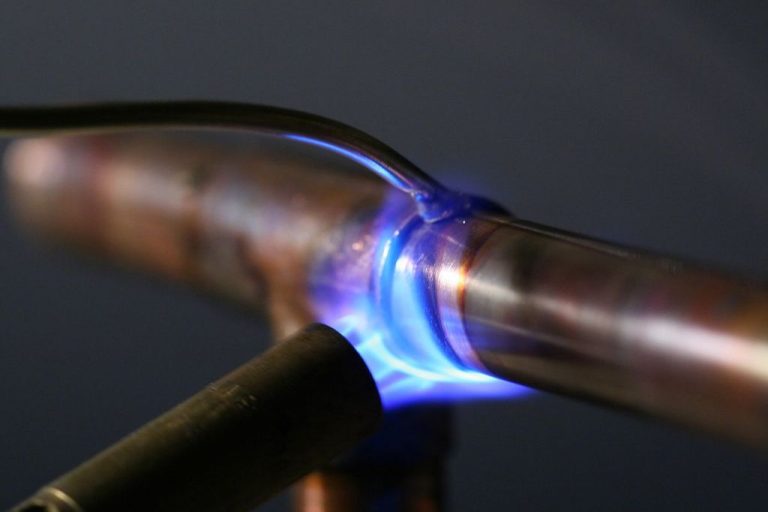Can I Revive Dried Air-Dry Clay?
What is Air-Dry Clay?
Air-dry clay, also known as self-hardening clay, is a modeling material that dries into a hard, durable form at room temperature. Unlike clays that require firing at high temperatures, such as ceramic clay or polymer clay, air-dry clay hardens naturally through evaporation.
Air-dry clay is water-based and contains other ingredients such as cellulose derivatives, polymers, and fillers. When exposed to air, the water evaporates and the clay hardens. The drying time depends on factors like humidity and thickness of the clay.
Compared to oil-based clays like polymer clay, air-dry clay is more porous, less rigid when dry, and re-wettable. It’s also non-toxic and easy to use, making it popular for crafts, model-making, and kids’ projects. Overall, air-dry clay offers modeling versatility without needing a kiln for firing.
Why Does Air-Dry Clay Dry Out?
Air-dry clay is designed to dry and harden at room temperature. This is thanks to its special composition, which typically contains water, natural minerals, and binders like glue and cellulose-based polymers.
The water contained in air-dry clay is gradually absorbed by the surrounding air through evaporation over time. As the water evaporates, the minerals and binders are left behind, resulting in a hard, rigid material that retains its shape.
Factors like humidity, air circulation, clay thickness, and exposure levels can affect the drying rate, but ultimately, air-dry clay will dry out completely when left in open air for an extended period.
Storing Air-Dry Clay
Proper storage is key to keeping air-dry clay moist and pliable for as long as possible. Here are some tips for storing clay:
Seal tightly in an airtight plastic bag or container. This prevents moisture from evaporating and the clay drying out. Make sure to press out any air pockets before sealing.
Wrap clay in plastic wrap if not using an airtight container. Plastic wrap helps retain moisture.
Refrigeration can extend the shelf life of clay significantly. The cold temperature keeps clay soft and workable for months when stored in an airtight container.
When storing clay long term, check periodically for mold growth. Discard any clay that has visible mold.
Avoid extreme temperature fluctuations. Keeping clay stored at a stable, cool temperature gives best results.
With proper storage techniques, air-dry clay can remain usable for 6 months or more. Be diligent about sealing clay tightly and refrigeration for long term storage.
Signs Your Clay Has Dried Out
There are a few key signs that indicate your air-dry clay has dried out too much:
Clay becomes hard and rigid – Clay that is still usable should remain malleable and flexible. If your clay has hardened to the point where it feels similar to dry paper mache, that’s a sign it has dried out too far.
Starts cracking or crumbling – Usable clay should be smooth and plastic. If your clay has visible cracks or starts crumbling apart as you try to shape it, it means most of the moisture has evaporated.
Loses plasticity and workability – Working with dry clay becomes progressively more difficult as it loses its plasticity. If you find the clay no longer wants to bend or hold its shape without cracking, it has likely dried out completely.
Can Dried Clay Be Revived?
In many cases, adding water can rehydrate dried clay and make it usable again. The key is to add water slowly and let the clay fully absorb it before adding more. Start by placing the dried clay in a container and spraying or dripping water over it. Allow the water to fully soak in, which may take 15 minutes or longer depending on the volume. Stir the clay and continue adding small amounts of water until the clay is soft and workable.
Rehydrating dried clay takes patience, especially for larger volumes. Do not add too much water at once or the clay will become a slurry. If properly rehydrated, even clay that was fully hardened can become malleable again. However, clay that was exposed to extreme conditions or improper storage may not be able to be revived. In general, small amounts of clay have a better chance of becoming usable again through gradual rehydration.
Tips for Rehydrating Dried Clay
Fortunately, with a little time and effort, it’s often possible to revive dried clay and restore it to a workable consistency. Here are some tips for rehydrating clay that has dried out:
Spray or soak the clay in water – The first step is to re-introduce moisture to the dried clay. You can either mist the clay with water from a spray bottle, or soak it in a bowl or bucket of water. Adding a small amount of water at a time and allowing it to fully absorb prevents the clay from becoming waterlogged.
Knead gently to work water into clay – Once the clay has absorbed some water, start kneading it gently to work the moisture throughout. Knead just enough to soften it without overworking. Folding and pressing the clay helps distribute the water evenly.
Allow time for complete rehydration – It takes time for water to fully penetrate dried clay. Cover the clay or store it in an airtight container, allowing a few hours or overnight for thorough rehydration. The time needed depends on the clay thickness and dryness. Test a piece to ensure it reaches the desired consistency before using.
Adding Supplemental Ingredients
Sometimes adding small amounts of supplemental ingredients can help revive dried out air-dry clay. Oils or glycerin added in tiny quantities to the water can aid rehydration. However, it’s important not to add too much oil or glycerin, as this can make the clay sticky or prevent it from hardening properly.
Good options for supplemental ingredients include:
- Vegetable oil – Start with 1⁄2 teaspoon per cup of water
- Baby oil
- Glycerin – Start with 1⁄4 teaspoon per cup of water
Mix the oil or glycerin into the water first before adding the dried clay. Knead it in thoroughly to evenly distribute it throughout the clay. If the clay still seems too dry, you can try adding another 1⁄4 teaspoon at a time until the consistency improves.
Avoid adding more than 1 teaspoon of oil or glycerin per cup of water, as too much can prevent the clay from hardening correctly. If the clay becomes sticky, greasy, or tacky, you’ve added too much. In that case, you may need to discard the batch and start again with plain water.
Reconstituting Large Quantities
Rehydrating large quantities of dried air-dry clay may prove challenging. The more clay there is, the more difficult it becomes to fully rehydrate the entirety of the clay body. Clay that has been allowed to thoroughly dry out often cannot be returned to its exact original consistency, no matter how long it soaks.
When reviving a sizeable lump of dried clay, it’s best to break it into smaller pieces first. Start by chiseling or scraping away at the outermost layers—these will be the most stubbornly dry. Once you get to the still somewhat flexible inner core, cut that into 1-2 inch chunks. Submerge the pieces completely in water, replacing the water every few hours as it absorbs the moisture from the clay.
Even with prolonged soaking, the center of large clay pieces may retain some stubborn dryness. You can knead the rehydrated chunks together, working that drier clay into the more saturated clay. While you may get close to the original smooth, flexible texture, it can be difficult to eliminate every last bit of grittiness from very dried out clay. Your reconstituted clay may work fine for some projects, but have reduced structural integrity for intricate shapes or thin-walled works.
When to Discard Dried Clay
While dried clay can often be revived with sufficient rehydrating, there comes a point when it’s best to discard it entirely. Here are some signs that your clay is too far gone to rescue:
- If the clay doesn’t rehydrate after multiple rehydrating attempts using various methods, it means the clay particles have likely hardened and bonded together in a way that prevents rehydration.
- If the clay smells bad or you notice any visible mold, that’s a sign of spoilage and the clay is no longer safe to work with.
- If the clay remains stubbornly crumbly and brittle even after rehydrating, the moisture was likely drained from it for too long.
At this stage, it’s best to discard the clay and start fresh with a new block or batch. While dried clay can often be revived with a bit of effort, if you’ve tried multiple methods to no avail, it may simply be too far gone and needs to be replaced.
Alternative Uses for Dried Clay
If your clay has dried out to the point where it can no longer be revived, you still have options for putting it to use. Here are some creative ways to repurpose dried clay:
You can crush fully dried clay into a fine powder to make your own homemade clay powder. To do this, break the hardened clay into small pieces and grind it using a mortar and pestle, rolling pin, food processor or coffee grinder. Ensure it’s crushed into a super fine powder before sifting to remove any remaining lumps or chunks. Homemade clay powder can be mixed with water or air-dry clay medium to reconstitute it. It also works great for texturing or as a dry clay resistant.
Dried clay can also be embedded into resin, concrete, clay slip, or other materials for unique crafts and jewelry pieces. Simply break the clay into small chunks first. Then mix the bits of clay into resin or embed them into clay items before firing them. The clay will create visible specks and add dimensional interest. Dried clay pieces can also be used as inclusions in geodes, garden stepping stones, wreaths, candles or other decorative items.


